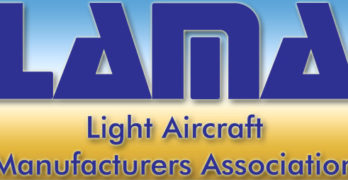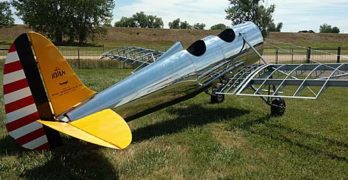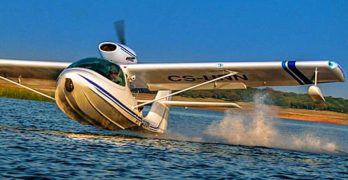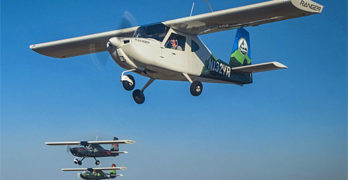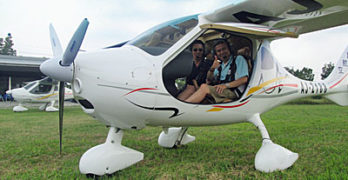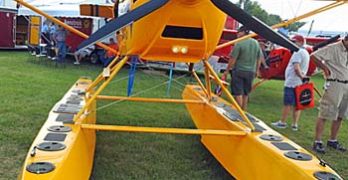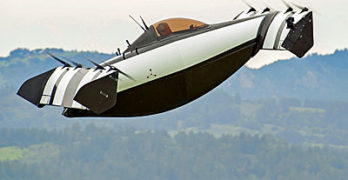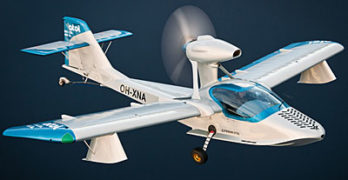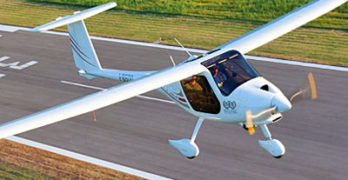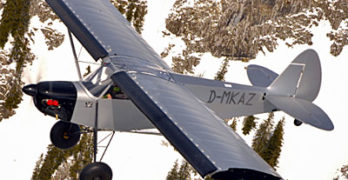Things are looking up for Light-Sport Aircraft, rather fantastically so in my admittedly biased opinion.
While this space is usually dedicated to cool new airplanes — not boring government policy reviews …yawn! — this article will provide some rays of light to an industry approaching its 15th birthday (in September 2019). I think some of this may surprise you.
LAMA, the Light Aircraft Manufacturers Association (kind of a GAMA for the light aircraft sector) and its partner — USUA, the U.S. Ultralight Association — have been heads-down working on improving the opportunities for LSA.
Core-Four-Plus-One
In June 2018, a series of many meetings that began in 2014 came to an early but very promising point. Here is what I think this means for the Light-Sport Aircraft manufacturing industry and those who own and operate LSA.
LAMA took a long list of suggestions about the then-10-year-old industry and reduced it to four initiatives.
Search Results for : Flight Design
Not finding exactly what you expected? Try our advanced search option.
Select a manufacturer to go straight to all our content about that manufacturer.
Select an aircraft model to go straight to all our content about that model.
Gorgeous Ryan ST in 95% Replica Form — Vintage Aircraft Lovers’ Delight
One aircraft at EAA AirVenture Oshkosh really caught my eye. OK, truth be told, dozens of aircraft caught my eye but this shiny example seemed to be looking back at me.
We simply had to do a video interview with the developer of the 1930s-era Ryan ST because of its fascinating history and its handsome good looks. If you love vintage aviation, this should grab your attention as it did mine.
Nick Pfannenstiel is a young developer with a mission, to create or, more accurately, re-create the Ryan ST. He began the design phase of his 95% scale Ryan ST in June 2015 and construction began in early 2016. By 2018, you see the aircraft is nearly finished form.
Ryan’s ST featured two open cockpits in tandem seating with a semi-monocoque metal fuselage. A main steel ring forms the backbone of the Ryan ST replica but most of the fuselage uses aluminium alloy
The project is not merely a personal fascination for Nick.
SeaMax “Rebrands” Itself; Well Established SLSA Seaplane Ready to Launch
The LSA seaplane sector is one of the most intriguing areas of the diverse Light-Sport space. Development has introduced many fresh ideas to this class of airplane.
At present a few companies are actively delivering airplanes that have proven themselves over several years of operation. One of those is SeaMax, formerly delivered by a company known by its Portuguese name, Airmax Construções Aeronauticas.
Now, welcome the simpler SeaMax Aircraft.
The manufacturer of the SeaMax M-22 announced a company rebranding last week. As part of its strategy to enter into the U.S. market, the company changed its logo and named the company after its prominent aircraft model.
“Our new brand, SeaMax Aircraft LTDA, captures the identity of a legendary and globally known aircraft and incorporates [the model] into the spirit of our company, consolidating market recognition,” said Shalom Confessor, Executive Director of the company headquarters in the United States.
The company now known as SeaMax Aircraft reports manufacturing 152 of its amphibious aircraft.
First Vashon Rangers Delivered to Owners After Successful Oshkosh Debut
UPDATE: Video on Ranger at bottom…
Often at EAA AirVenture Oshkosh we see improved models among vast displays of showplanes. What we see less of are brand new offerings. Yet given the sheer number of aircraft, something brand new can surprise.
You probably already know about Vashon Aircraft’s Ranger (we reported it here) but attendees saw it for the first time at the big summer airshow.
We shot video with Vashon marketing maven Amy Bellesheim and owner John Torode at the event and you’ll learn more about Ranger from this duo when editing is completed. We recorded our usual large batch of fresh video; please be patient during the editing phase and check Ultralight News YouTube channel to see the latest.
Great Showing and Show
Amy reported, “We were overwhelmed with positive feedback” at Oshkosh. “We are up to 57 deposit holders,” she beamed.
From First-World Airshow to Emerging (Aviation) Market Fly-In… the Future?
EAA AirVenture Oshkosh 2018 is now history. You will be reading and seeing lots more about the big summer celebration of flight — it appeared very strong to most observers — and you will see lots more from OSH ’18 here and on Videoman Dave’s popular YouTube channel.
As most readers know, Oshkosh is a massive event, by many measures the largest gathering of true aviation believers in the known universe. However, being big isn’t everything.
Indeed, some recreational flying enthusiasts will soon begin a trek to Mt. Vernon Illinois for the Midwest LSA Expo, a far smaller event that has proven adept at linking willing buyers with ready sellers. (It’s also our very best event to capture Video Pilot Reports, so watch for news about that in about a month.)
Half A World Away,
Aviation Is Getting Started
Let me tell you about a specific brand fly-in, for the CTLS produced in China.
Experimental Light-Sport Aircraft (ELSA); Personalize Your Aircraft
You have more privileges than you may know with your Light-Sport Aircraft.
One of the more misunderstood aspects of FAA’s sweeping 2004 Sport Pilot/Light-Sport Aircraft regulation is ELSA or Experimental Light-Sport Aircraft.
Some people call these “kit” LSA. While they can be sold that way, no percentage applies so a manufacturer could call an ELSA a kit by merely having the buyer apply a single decal.
To gain its Special Airworthiness certificate, an ELSA must first be a bolt-for-bolt copy of the manufacturer’s Special or fully-built version of LSA. However, once certificated, the owner can begin to make changes on his or her own. They can also become qualified to do all manner of maintenance themselves, assuming they so desire. An Airframe and Powerplant mechanic (A&P) or Light-Sport Repairman – Mechanic (LSR-M) can also work on ELSA as they can SLSA.
Once certificated and in his possession the owner can change to ELSA status allowing him or her to do almost anything …change avionics or even swap engines.
Infotech Meets (Part 103) Ultralight Aircraft. Big Deal! Or, So What?
This article again delves into the changing face of aviation and in this case within the Part 103 Ultralight Vehicle sector.
Infotech in Part 103 ultralight vehicles means far more than GPS or even synthetic vision digital screens (imagine an iPad mated to a Levil box … remarkable stuff and for very little money). However, digital avionics are not the point of this story.
In the last few days, a formerly Canadian company, Opener, announced their new eVTOL (electric vertical takeoff and landing), the second developer I know of to adopt Part 103’s simplicity and freedom. Like Kitty Hawk’s Flyer*, the rather unusually-named BlackFly also calls itself an “ultralight,” more precisely meaning an ultralight vehicle that can operate under Part 103. What you might like about this, compared to more than a dozen “air taxi” designs, is that BlackFly appears aimed at recreational flyers (as does Flyer).
Light-Sport Aircraft Seaplane Drama; One Up, One Down, Both Continuing
In the fascinating LSA seaplane sector-within-a-sector, we find both good news and bad news today, though the latter can be overcome. That’s the shortest possible story. More detail follows.
The Good
“It is with great pleasure we can report that Equator Aircraft Norway achieved first fully balanced flight with the P2 Xcursion prototype aircraft over the newly painted runway 22 at Eggemoen Technology Park in Norway,” reported the company. Here’s our earlier report on this fascinating project.
Tested by Eskil Amdal, Equator reportedly accelerated to 70 knots before leaving the ground and flying down the runway at 100 knots at nine meters (about 30 feet, at the edge of ground effect), before landing smoothly. Amdal reported stable flight with good controllability in all axes. Two more flights were performed the following day, further establishing confidence in the flying characteristics.
“The aircraft is a prototype developed by Equator with very limited means since 2010,” explained the company.
Pipistrel Update — 900 Virus, “House Organ,” and Oshkosh Splash
In the world of Light-Sport Aircraft, we have more than 90 manufacturers and 145 Special LSA (see our whole list) accepted* by FAA. This huge diversity of design has given recreational pilots around the world a large number of ready-to-fly aircraft choices beyond anything we have seen in aviation since the beginning.
However, the old 80/20 rule still applies where (approximately) 80% of the aircraft sold are built by 20% of the manufacturers. It is a credit to this 14-year-old industry that even the smaller companies can remain viable enterprises. Very few of the 90+ manufacturers have left the business. However, most of the airplanes are made by a few top producers, which you can see in our market share charts.
Pipistrel is One of the Leaders
“Serial Number 900 leaves the factory headed for Australia,” glowed Michael Coates, the longtime distributor for Pipistrel aircraft in Australia and the United States.
Zlin’s Shock Goes “Ultra” — Further Expanding Appeal of Bush Aircraft Configuration
After Aero 2016, we enthusiastically reported on the Zlin Shock Outback (as it is known to Americans; Shock Cub to other countries). You could fairly call it Europe’s answer to Just Aircraft’s jaw-dropping SuperSTOL, the amazing performer that captures nearly everyone’s attention from its introduction until today. Both designs go far beyond the best-selling Special LSA in the country: CubCrafters’ CarbonCub.With the original Shock Outback’s awesomely powerful Continental Titan X-340 producing 180 horsepower, pilots had a shock-and-awe response to the short takeoff roll and homesick-angel climb performance. The aircraft truly inspired many.How could Zlin go one better on this fascinating design? In a word: lighter.Admittedly, Shock Outback, sold in America by SportairUSA — with the big engine and all the other (sometimes optional) fixings such as their slatted wing, long-stroke landing gear, giant Alaskan tires — is an aircraft about as large as it could be and still fit in the LSA category.
- « Previous Page
- 1
- …
- 69
- 70
- 71
- 72
- 73
- …
- 147
- Next Page »


